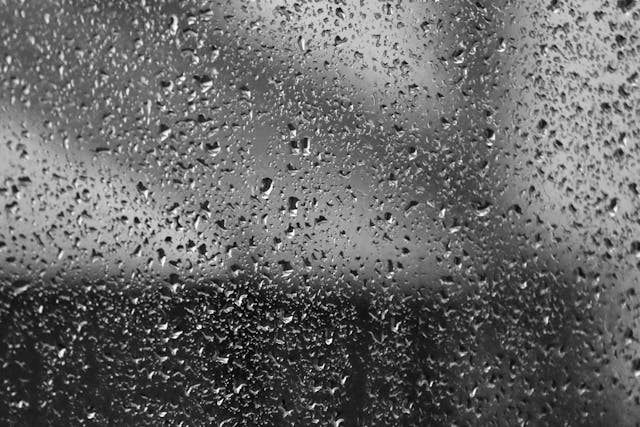The act of collecting rainwater, a novel solution to the issues of environmental preservation and water shortage, is subject to legal regulations that differ across various states. In Ohio – also known as the Buckeye State – it’s crucial for inhabitants to familiarize themselves with the specific provisions in place under Ohio’s rainwater collection legislature. Any failure to adhere might invite punitive action. Although numerous states have taken steps towards modernizing their laws encouraging the practice of rainwater harvesting, absolute freedom in this regard remains elusive.
Inhabitants desirous of harnessing rainwater need to abide by certain guidelines and boundaries outlined by Ohio’s rainwater collection statutes. Among these prerequisites are stringent construction norms designed with an intention to avoid contamination risks associated with collected water, thereby mitigating potential threats posed on public health grounds. Furthermore, depending upon particular regions within Ohio, securing a permit may be obligatory prior to installing a system for harvesting rainfall – bringing further lawful aspects into contemplation. Thus, before embarking on establishing a system aimed at collecting rainfall in Ohio territory; grasping legal complexities becomes imperative.
The Importance of Rainwater Harvesting and its Impact on the Environment
Though it’s a pragmatic and eco-friendly method for water preservation, there lingers a cloud of uncertainty regarding the legality of rainwater harvesting in various states – Ohio being one such example. The question that arises frequently is: Is the accumulation of rainwater lawful in Ohio? This query not only highlights an increasing curiosity towards this approach to water gathering but also underscores its legal ambiguity across different geographical locations.
Rainwater collection takes on a pivotal role in easing the pressure on our community’s water supply systems. It enables us to reduce our dependency on treated water remarkably by harnessing this natural resource, particularly for non-drinking uses like irrigation, flushing toilets, and cleaning tasks. This habit fosters an environmentally responsible lifestyle as it aids in decreasing soil erosion and excess water runoff which can wreak havoc on nature if left unchecked. On par with these benefits, it fortifies households’ resilience during times when access to water becomes scarce or limited.
State Regulations for Rainwater Harvesting: A General Overview
In the realm of water preservation, one might initially dismiss the significance of amassing rainwater in Ohio as a viable strategy for safeguarding our precious water supplies. However, grasping and adhering to location-specific rules for this action is critically essential to guarantee its legitimate implementation and amplification of its ecological footprint. The legality surrounding rainwater collection fluctuates among various states within the U.S.A, contingent on state laws, local bylaws, and building code stipulations. Yet in Ohio, such an approach finds itself not only regulated but also encouraged under strict guidelines.
The rules steering the conduct of collecting rainwater in Ohio are founded upon directives from the Ohio Rainwater and Land Development Manual — a comprehensive blueprint that unfolds an extensive array of procedures and benchmarks to pursue. It affirms that harvested rainwater should never blend with public water resources; moreover, if intended for ingestion purposes, collected precipitation must undergo treatment prior to use. Further technical requisites cover aspects like design elements, installation processes and upkeep routines pertaining to these rainwater harvesting systems – all conceived meticulously ensuring safety measures are met alongside efficacy while promoting sustainable practices.
This journey towards accountability in conserving water begins with enlightening ourselves about these regulations.
Decoding the Legal Aspects of Rainwater Harvesting in the Midwest
Navigating the labyrinthine legal terrain of rainwater harvesting in the Midwest can be akin to untangling a Gordian knot, necessitating meticulous analysis of intricate legislation whilst maintaining an awareness of varying jurisdictional perspectives. The law’s perplexity is further amplified by the fact that each state has its own unique rainwater harvesting laws, thereby making their deciphering a Herculean task.
Yet wading through this complex maze of legal codes offers invaluable benefits – it illuminates the path for instituting effective and compliant rainwater collection systems.
Venturing into the realm of legality surrounding Midwestern rainwater harvesting reveals an interesting peculiarity; contrary to what one might expect, most states here actively champion the cause of collecting and utilizing rainfall. They have woven elaborate regulatory tapestries to govern water resources, including harvested rainfall with a burstiness that often surprises those unfamiliar with such matters.
These rules are not mere bureaucratic red-tape but serve as bulwarks ensuring sustainable usage and conservation of precious water reserves. By keeping these life-giving reservoirs intact, they ensure our descendants too can partake in their bounty.
Acquainting oneself with these regulations stands as an initial stride towards exploiting all possible advantages from this eco-friendly practice while remaining firmly within legal boundaries set forth by applicable statutes.
Application and Permit Process for Rainwater Collection Systems
Embarking on the ambitious journey of setting up a rainwater collection system necessitates an earnest pondering over relevant laws. The heartbeat of this expedition lies in navigating through the labyrinthine process of application and procurement of required permissions. This pathway unfolds its own distinct hurdles, demanding a deep-seated grasp of subtleties woven into Ohio’s legislative tapestry. Consequently, homeowners must immerse themselves in meticulous research or solicit expert counsel before plunging into the application procedure to skirt potential legal quagmires.
Statutes governing the setup and operation of rainwater collection systems may oscillate, not simply across states but often within cities inside a single state as well. These regulatory complexities can steer both your permit attainment journey and blueprint for your rainwater harvesting apparatus while also influencing its execution. In turn, these legislations keep tabs on how you utilize collected precipitation water. Henceforth, an incisive comprehension of such nuances is fundamentally crucial to sidestep infractions whilst fostering an eco-friendly way of life simultaneously.
Considerations for Implementing Rainwater Collection Systems: A Legal Perspective

To unravel the complexity of setting up a rainwater collection system, one must adhere to intricate legal limitations and guidelines that permeate this procedure. The journey commences with the assimilation of state and local legislation, offering explicit blueprints of authorised and forbidden practices. In addition, these legislative frameworks outline essential prerequisites – location, dimensions, material composition, among other construction specifics for the rainwater gathering facility.
A crucial aspect worth pondering is whether securing a permit is requisite prior to embarking on any rainwater harvesting venture.
The scope of legality in relation to rainwater harvesting surpasses initial installation stages; it profoundly affects usage methods as well as storage and dissemination techniques for harvested water. It’s not uncommon for state rules to enforce restrictions concerning alteration or diversion from natural water flows – violations which could potentially result in punitive measures if overlooked.
Meanwhile, some geographical areas classify collected rainwater into two categories: potable (drinkable) and non-potable (not safe for drinking), each having its unique set of legal protocols. Therefore an ample understanding of law combined with well-planned foresight remain pivotal elements towards ensuring long-term success when establishing a functional rainwater collection system.
Continuing from the initial stages, one must also consider legal implications for the maintenance and operation of a rainwater collection system. This includes regular inspections to ensure that the facility is operating within its permitted parameters, as well as adherence to any additional regulations pertaining to water quality standards or treatment procedures.
- Understanding State and Local Legislation: It’s essential that individuals thoroughly comprehend their respective state and local legislation regarding rainwater harvesting systems. Some states may have stringent laws while others might be more lenient.
- Securing Permits: Depending on jurisdictional requirements, securing permits may be necessary before initiating any construction work related to the rainwater collection system.
- Usage Methods: The legality of using harvested water for various purposes such as irrigation, washing vehicles or flushing toilets can vary greatly among different regions. Therefore it’s crucial to understand your specific region’s rules and regulations in this regard.
- Storage & Dissemination Techniques: Legal restrictions might also apply on how collected water can be stored or disseminated – whether it can be used immediately or needs certain treatment before use.
- Alteration/Diversion Restrictions: Many states enforce strict rules against altering natural flow patterns of water bodies; thus, careful planning is required when designing these systems so as not violate these norms which could lead punitive actions if overlooked.
- Classification of Collected Water: Certain geographical areas classify collected rainwater into potable (drinkable) and non-potable categories with each having unique set of legal protocols; understanding these classifications helps in setting up an appropriate storage mechanism accordingly.
In conclusion, implementing a successful rainwater collection system requires meticulous planning paired with comprehensive understanding about relevant legislations at every stage – right from preliminary design phase through ongoing operations post installation.
Prohibited Practices and Penalties under Rainwater Harvesting Laws
Harvesting rainwater, a mechanism to conserve water resources, must be executed within the legal framework to sidestep potential environmental impacts and disagreements over water entitlements. This calls for an in-depth comprehension of forbidden practices and potential legal consequences triggered by non-adherence.
Unauthorized collection of rainwater or violating stipulated license terms like excess gathering or misuse generally fall under prohibited acts. Some jurisdictions take it up a notch, limiting aspects such as permissible types of collection apparatus or specific purposes for harvested rainwater.
Penalties fluctuate widely across different jurisdictions – from monetary fines to withdrawal of future harvesting rights. The extent of these penalties typically mirrors the seriousness of the violation implying that recurrent or blatant infringements invite hefty fines or legal proceedings.
Enforcement is consistent across all spheres with objectives centered around ensuring adherence, fostering judicious water management strategies, and bolstering collective responsibility towards preserving our environment.
FAQ
The labyrinth of laws surrounding rainwater harvesting fluctuates across different states. In regards to the Buckeye State, there are stringent rules, licenses and methodologies that need strict adherence for legally compliant rainwater collection. These ordinances might encompass a spectrum of matters including permissible usage of water and acceptable types of receptacles for gathering.
Rainwater collection casts an enormously positive footprint on our environment. It curtails dependency on conventional water sources, diminishes water runoff which otherwise could instigate erosion, and fosters sustainable utilization of our vital aqua resources.
The state-wise guidelines concerning precipitation accumulation can display stark contrasts. Some states exhibit no constraints whatsoever while others maintain rigid regulations about factors like design and size of systems used for capturing rainfall, treatment procedures applied to collected water, as well as permissions needed to set up these systems.
Much akin to other territories, Midwest too maintains certain legislations associated with gathering droplets from heavens above. These regulatory facets may vary from restrictions imposed upon eligible types of catchment system installations through required permits all the way till governance over how harvested agua is employed.
Application submission process along with acquiring relevant permits for installing such storage units differs greatly depending upon specific locale or state jurisdiction. Generally speaking though, you would have submit your application before corresponding authority who will then scrutinize it against pre-set criteria before issuing necessary permit should all conditions be met satisfactorily.
Legal deliberations for constructing your own rainfall reservoir typically revolve around complying with respective local and state norms, procuring required licenses, ensuring that the system is installed and maintained correctly along with using harvested water in line with set regulations.
Practices deemed unlawful often fluctuate from state to state but may encompass unauthorized harvesting of rainwater, utilizing non-compliant catchment systems or putting collected water to prohibited uses. The punitive measures also range widely including imposition of fines, penalties or even incarceration in case of grave contraventions.
